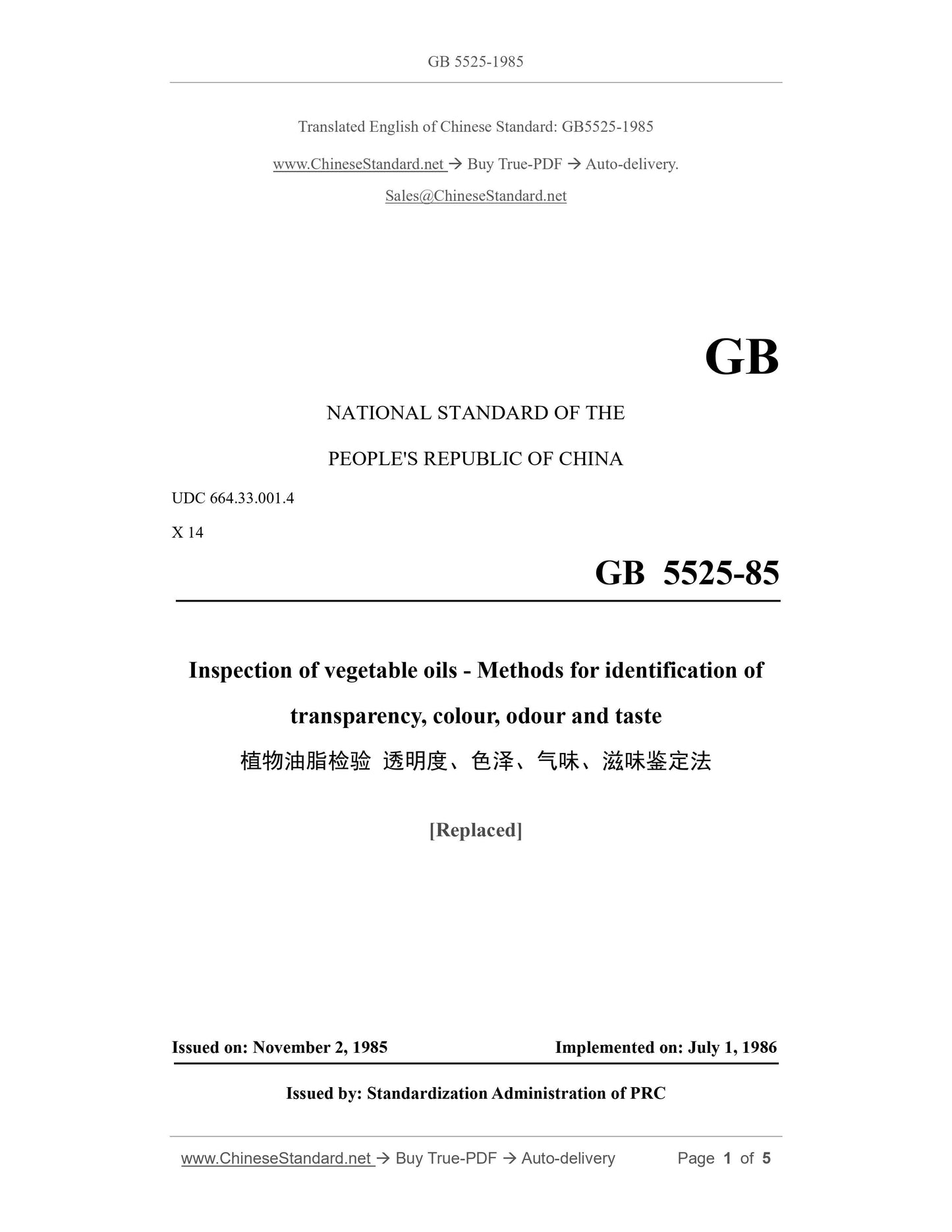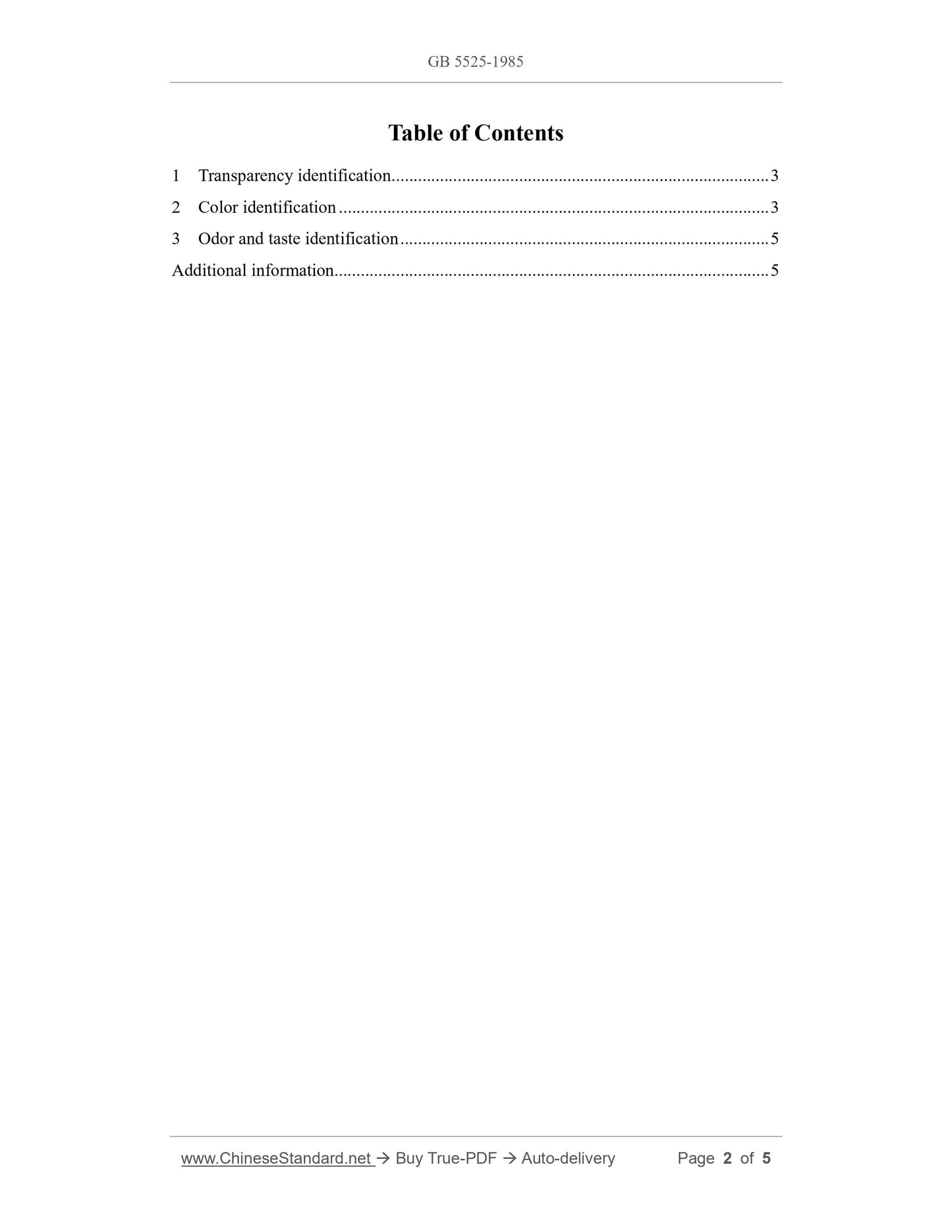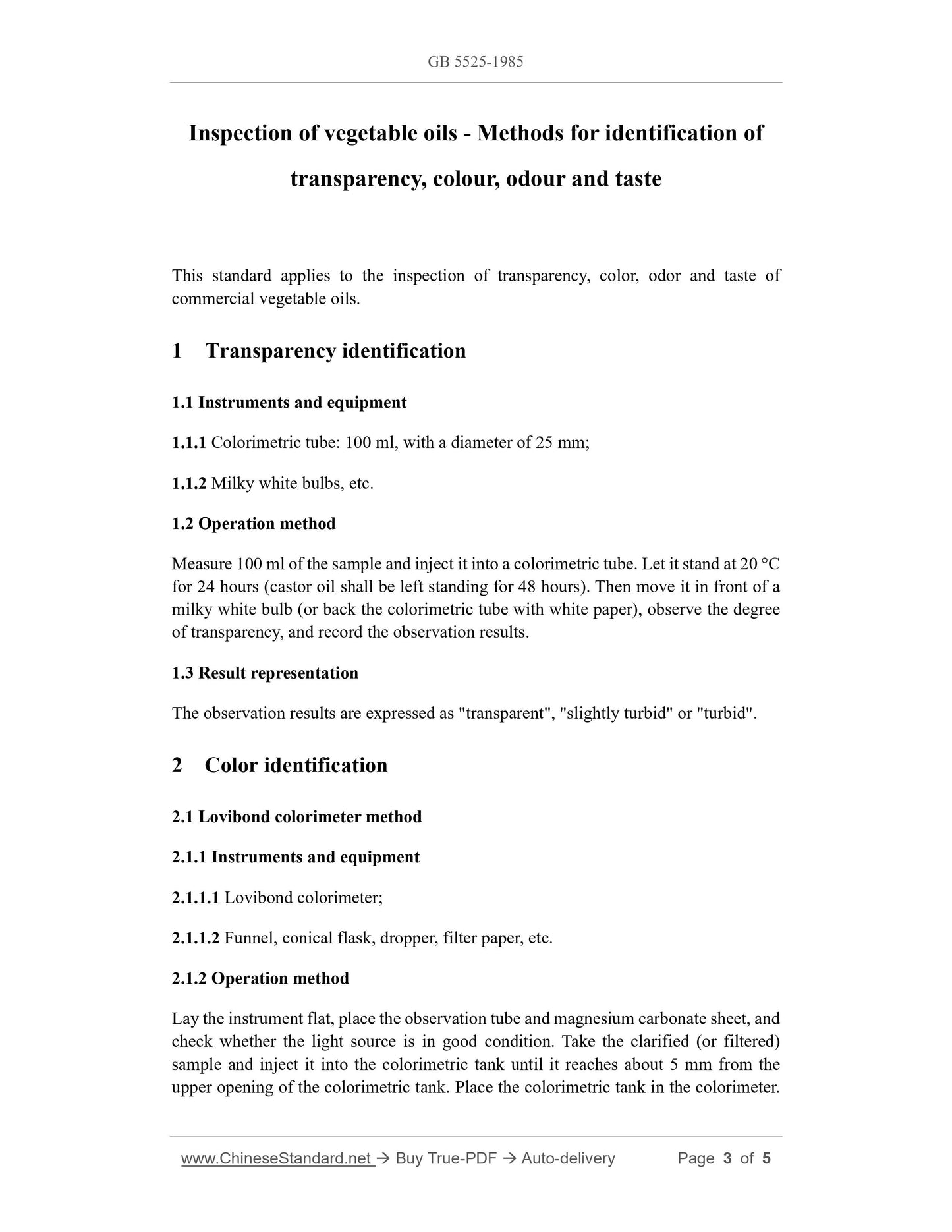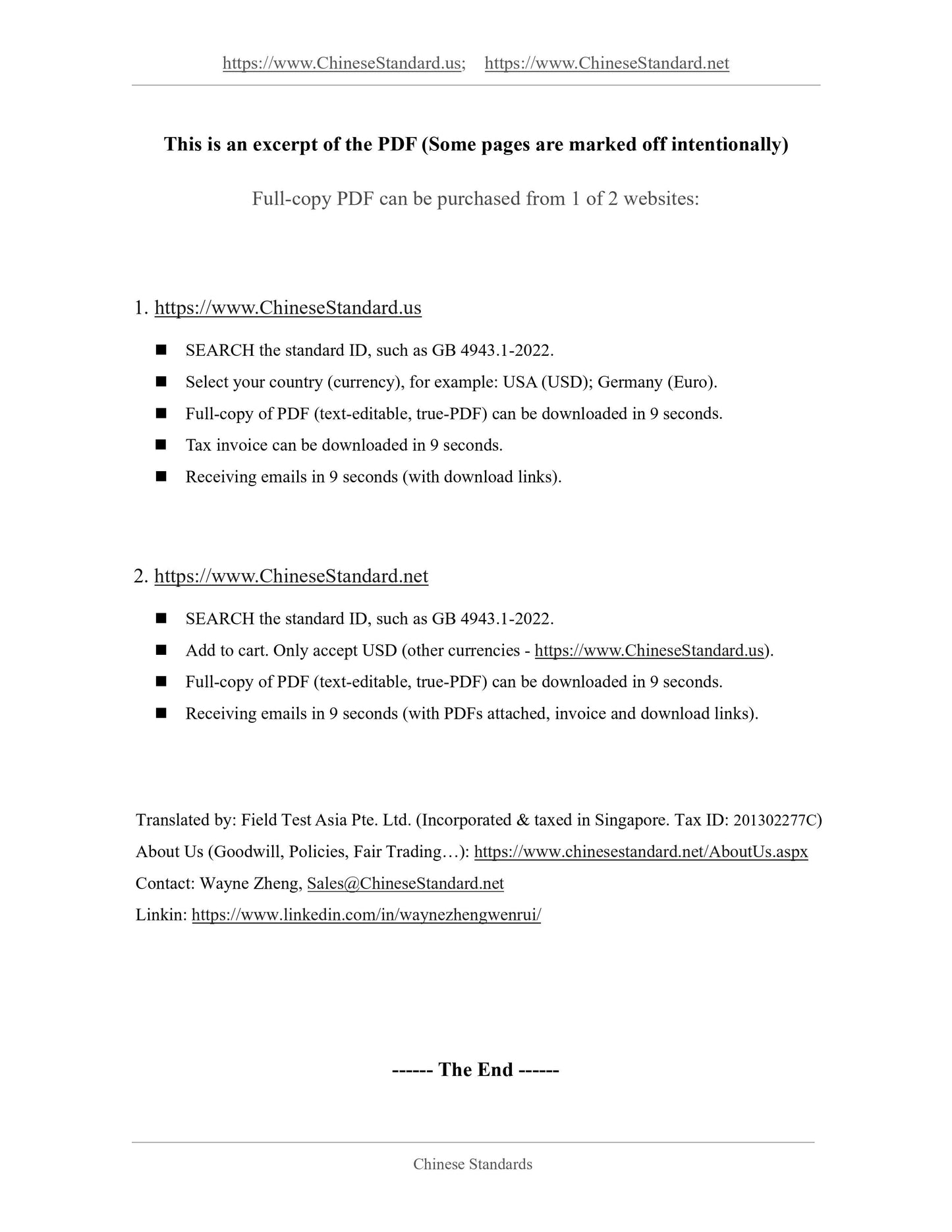1
/
of
4
www.ChineseStandard.us
GB/T 5525-1985 English PDF (GB/T5525-1985)
GB/T 5525-1985 English PDF (GB/T5525-1985)
Regular price
$190.00
Regular price
Sale price
$190.00
Unit price
/
per
Shipping calculated at checkout.
Couldn't load pickup availability
GB/T 5525-1985: Inspection of vegetable oils--Methods for identification of transparency, colour, odour and taste
Delivery: 9 seconds. Download (and Email) true-PDF + Invoice.Get Quotation: Click GB/T 5525-1985 (Self-service in 1-minute)
Newer / historical versions: GB/T 5525-1985
Preview True-PDF
Scope
1.1 Instruments and equipment1.1.1 Colorimetric tube: 100 ml, with a diameter of 25 mm;
1.1.2 Milky white bulbs, etc.
1.2 Operation method
Measure 100 ml of the sample and inject it into a colorimetric tube. Let it stand at 20 °C
for 24 hours (castor oil shall be left standing for 48 hours). Then move it in front of a
milky white bulb (or back the colorimetric tube with white paper), observe the degree
of transparency, and record the observation results.
1.3 Result representation
The observation results are expressed as "transparent", "slightly turbid" or "turbid".
Basic Data
| Standard ID | GB/T 5525-1985 (GB/T5525-1985) |
| Description (Translated English) | Inspection of vegetable oils--Methods for identification of transparency, colour, odour and taste |
| Sector / Industry | National Standard (Recommended) |
| Classification of Chinese Standard | X10 |
| Classification of International Standard | 67.200.10 |
| Word Count Estimation | 2,293 |
| Date of Issue | 11/2/1985 |
| Date of Implementation | 7/1/1986 |
| Regulation (derived from) | Announcement of Newly Approved National Standards No. 2008 (No. 116 overall) 3 |
| Issuing agency(ies) | National Bureau of Standards |
Share







